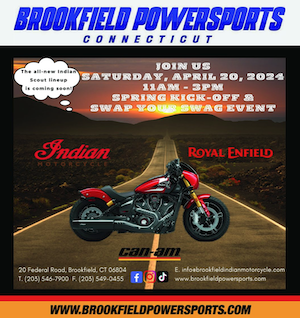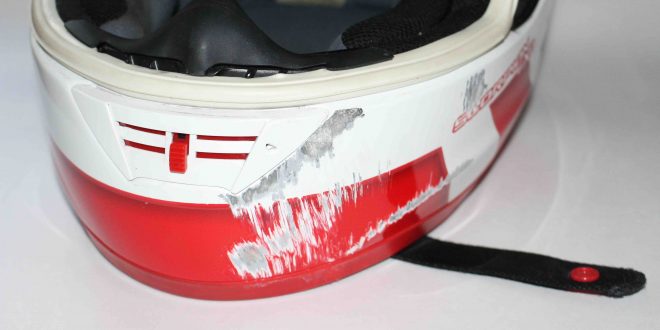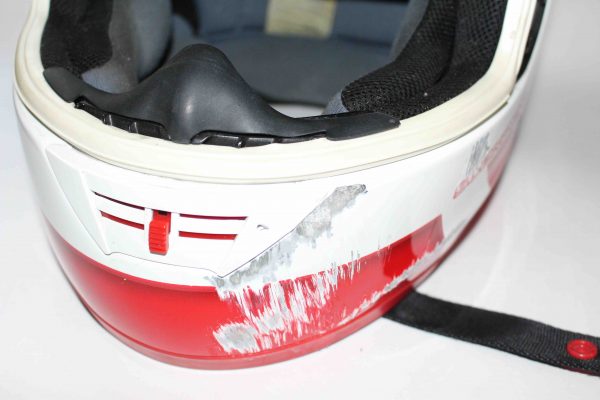NAUGATUCK, CT – Head and brain injuries are the leading cause of motorcycle fatalities, so the helmet is the most important piece of protective gear that any rider can wear to protect the brain. It’s more important than the traditional leather jacket that prevents road rash, the gloves that keep  the hands from getting sunburned or scarred, or the sturdy boots that encase the ankles.
the hands from getting sunburned or scarred, or the sturdy boots that encase the ankles.
Helmets come is various styles – full-face, three-quarter, and half varieties, the last being referred to as a skid lid. Full-face helmets provide the most protection because they also provide chin and face protection the other styles do not.
Research has shown that the face and chin are much more likely to be an impact point in a crash than the top of the head.
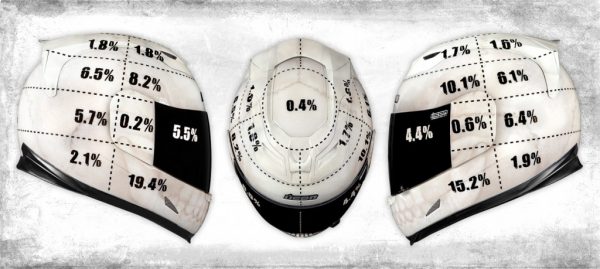
The helmet’s main function is to protect the head and brain from injury. To accomplish this task, helmet design is fairly simple in form. There are four basic components of a helmet: 1) Outer Shell; 2) Impact Absorbing Liner; 3) Comfort Padding; and 4) Retention System.
The Outer Shell is designed and constructed to prevent objects from penetrating through the helmet and into the head, and also to spread out the forces of an impact allowing the impact-absorbing liner to perform better.
The Impact Absorbing Liner is typically manufactured using extruded polystyrene (Styrofoam). Its primary task is stated in its name and works to protect the head and brain by absorbing energy and slowing down the head during an impact. Without this the head and brain would make a sudden stop, which causes the gray matter to hit the inside of the skull, leading to brain injury. A good demonstration of how this works would be to try to push a finger into and through a thick sheet of Styrofoam. The material compresses, absorbing the energy, and resists the continued finger press.
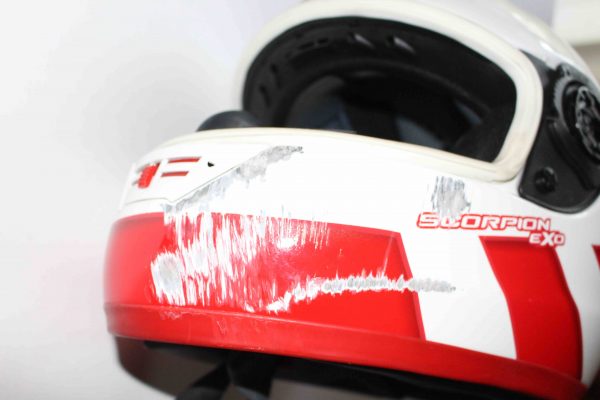
The Comfort Padding helps with comfort and fit. It keeps the potentially uncomfortable part of the helmet off our head and face.
The Retention System is the combination of the fastener straps and the double D-Rings used to keep the helmet securely on the head. A common mistake by new riders is to use the small plastic snap on the strap to hold the helmet in place. This snap is only meant to keep the end of the strap from flapping in the wind, and will not work to keep the helmet in place during a crash.
During the purchase of a helmet, focus on good fit first, then style. Sizing and fit can be different across the many brands. One factor of difference that can affect the fit and comfort of a helmet is head shape. There are three common shapes helmets come in: 1) long oval (longer front-to-back than side-to-side); 2) intermediate oval (slightly longer front-to-back than side-to-side); and 3) round oval (equally long front-to-back and side-to-side).
Although a large number of people do fall in the middle near the intermediate oval head shape, try on all the different shapes to learn what works best for you. A helmet that is too narrow will cause pressure points, and a too round helmet may not fit as snug as it should.
Due to the different head shapes each manufacturer usually has their own sizing charts. Determining your head measurements can be done using a cloth measuring tape or piece of string that can be measured later. Measure from the crown of your head just above the brow and keep the tape level, measuring around the widest part of the head. Use this measurement to look up your size on the charts. It is typically okay to move up or down to the closest size. Which way you go is personal choice. Some riders prefer a snugger feel, while others like a bit more room.
To test for a proper fit, with the retention strap secured the helmet should not move up and down or side to side excessively, and should remain in contact with the face. It should not be able to be rolled forward off the head.
When fitting a helmet know that the comfort padding will break in over time, and it is important to try the helmet on to confirm a proper fit. A good gauge when selecting a helmet size is to use the finger test. While wearing the helmet, press forward from the rear with one hand while sliding the index and middle finger of the other between the forehead and helmet. It should snugly slide to about the first knuckle.
If the fingers slide in further the helmet fit is probably too loose. If the fingers do not fit or slide in the fit is probably too tight.
The most important part is to try the helmet on first before you ride. Dealers and many full service motorcycle shops can assist with proper fitting. Once you find one that fits – be wise and protect the brain.
 Ride CT & Ride New England Serving New England, NYC and The Hudson Valley!
Ride CT & Ride New England Serving New England, NYC and The Hudson Valley!
